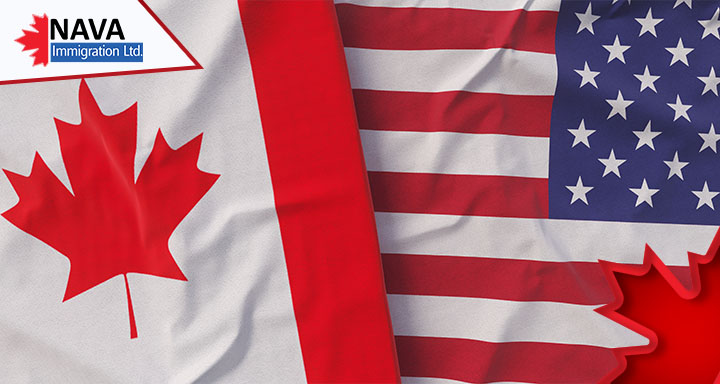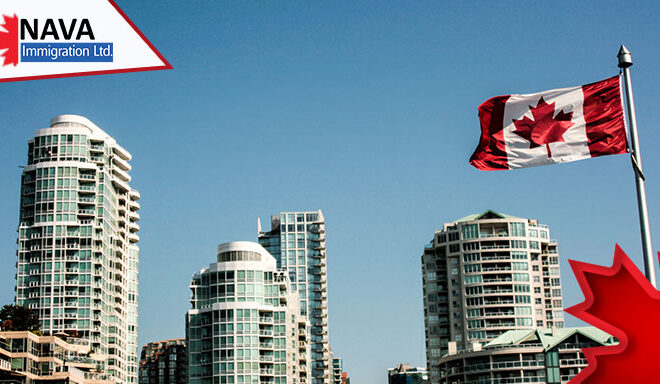Canadian Immigration VS. US Immigration
Both Canada and the United States are popular immigration destinations for foreign nationals, providing numerous opportunities to live, work, study, and settle permanently.
Presently, 45 million people of foreign origin reside in the United States, which accounts for nearly 14 % of the total population of the US. On the other hand, as per 2021 stats, over 8.3 million people of foreign origin reside in Canada, which accounts for nearly 23% of the total Canadian population.
Discover the immigration policies of both Canada and the United States and various available options for immigrants to determine the best country for immigration.
Canada’s Immigration Policy
The Government of Canada releases an Immigration Levels Plan each year, which discloses how many immigrants the country will accept to the country. The plan provides guidelines on immigration aspects and reveals the total number of immigrants the country is planning to welcome via several programs, including economic, family, and humanitarian class programs, during the next three years.
Canadian Government, in its Immigration Levels Plan 2023-2025, revealed that it would expand the country’s immigration target and aims to accept 460,000 immigrants in 2023, 485,000 immigrants in 2024, and 500,000 immigrants in 2025.
Further, the immigration plan prioritizes targeting skilled workers to manage the country’s labor shortages, acknowledging the value of family reunification, and assisting needy populations worldwide via refugee resettlement measures.
IRCC admitted over 437,000 immigrants to the country in 2022. Economic pathways, including Provincial Nominee Program and Express Entry, accounted for 56% of new immigrants to the country, whereas 24 % of new immigrants were from Family class programs.
In descending order, the most common root countries of Canadian PR immigrants are India, China, Afghanistan, Nigeria, Philippines, and France.
United States Immigration policy.
The United States welcomed more than 1,100,000 Lawful Permanent residents, or LPRs, in 2016. But, the country witnessed a notable drop in the total Lawful PRs accepted to the country in recent years because of the covid-19 pandemic, government policies, and processing delays. In 2020, the US welcomed more than 700,000 LPRs, and 740,000 in 2021. This means that in terms of per capita immigration, Canada welcomes three times more immigrants than the United States.
In the US, the Immigration and Nationality Act (INA) oversees the US immigration policy. The Immigration and Nationality Act, or INA, authorizes the United States to issue up to 675,000 permanent immigrant visas annually via different visa categories.
In addition to 675,000, INA places no restrictions on the yearly entrance of Us citizens’ spouses, parents, and minor children up to 21. Also, the United States permits a particular number of refugees into the country every year via the US Refugees Admissions Program.
Besides these, there are various ways for skilled immigrants to enter the US temporarily or permanently. The US offers offer 20 kinds of visas for temporary immigrant workers. The United States restricts the number of immigrants to 140,000 annually for permanent employed-based programs.
For close relatives of US citizens, numerous visas are available annually if they satisfy the eligibility criteria. But, the number of visas available annually is limited under the family preference system, which includes US citizens’ brothers, sisters, and adult children, and Permanent Residents’ spouses and unmarried children.
In descending order, the most common root countries of United States PR immigrants are Mexico, China, India, the Philippines, Dominican Republic, and Cuba.
How you can apply for United States Permanent Residence
In the US, lawful permanent residents (LPRs) are permitted to live in the united states permanently.
The US PRs may receive an offer of employment without specific limitations, own property, join the armed forces and obtain financial support.
Anyone can get US permanent residency in the following various ways.
- Based on a specific permanent full-time job offer, an individual can apply for a US PR via an employer-sponsored green card application. The five available preference categories are EB-1, EB-2, etc.
- An individual can apply for a self-sponsored employment-based green card application without requiring a specific job offer. This is available under the EB-1 Extraordinary Ability (EB-1A) or EB-2 National Interest Waiver (NIW)
- An individual can obtain a US PR if married to a US citizen.
- An individual can obtain a US PR if sponsored by a close relative who is a citizen or PR of the United States.
- An individual can obtain a US PR via the lottery program of the US Department of State Diversity.
How you can apply for a Canadian Permanent Residence
In Canada, a permanent resident is authorized to live, study, and work in Canada and receive the majority of advantages of being a Canadian citizen. This includes healthcare coverage and the chance to apply for Canadian citizenship.
An individual can receive a Permanent Residency of Canada via various programs. For skilled workers, the following are the most famous ways to get access to Canada:
- Express Entry
- Provincial Nominee Programs
- Sponsorship
Express Entry in Canada is a popular application management system that offers Canadian permanent residence to skilled workers via the following three programs:
- FSWP: The Federal Skilled Worker Program
- CEC: The Canadian Experience Class
- FSTP: The Federal Skilled Trades Program
Qualified candidates get entry to the Express Entry Pool and are awarded a score based on various factors of the Comprehensive Ranking System. The highest-scoring candidates in the pool are provided with an invitation to apply (ITA) by the Canadian government.
The PNP or Provincial Nominee Program is another way to get access to Canada. Almost all the Canadian provinces and territories operate PNP except for the province of Quebec and Nunavut. Through PNP, the provinces and territories nominate candidates desiring to immigrate to Canada and who intend to settle in a particular Canadian province.
Canada also has immigration programs that allow Canadian citizens and PRs to invite their family members to the country. They can bring their spouses, children, and grandchildren to the country if they are eligible for family sponsorship.
What’s ahead?
Regarding the US, several major immigration policies are under modification, reflecting the measures taken by the US government and court rulings. In order to ensure safe and governed migration, various modifications are particularly to expand the existing legal immigration pathways and are for border enforcement and illegal migration.
A fluctuation in the visa numbers based on family-sponsored and employment-based immigration can be seen as the unused visa numbers of earlier years may be allocated to the next year candidates. To simplify this, according to the US Citizenship and Immigration Services website, currently, the Department of State assesses that the employment-based annual limit of 2023 will be nearly 197,000. This is because almost 57,000 unused family-sponsored visa numbers from 2022 are being added to the employment-based limit for 2023. On the other hand, Canada will continue to raise its immigration targets over the coming years, with the aim of admitting 500,000 new immigrants to the country by 2025. Furthermore, as the Provincial Nominee Program aims to expand, the Canadian government plans to provide more authority to the provinces to nominate immigrants via the PNP.





